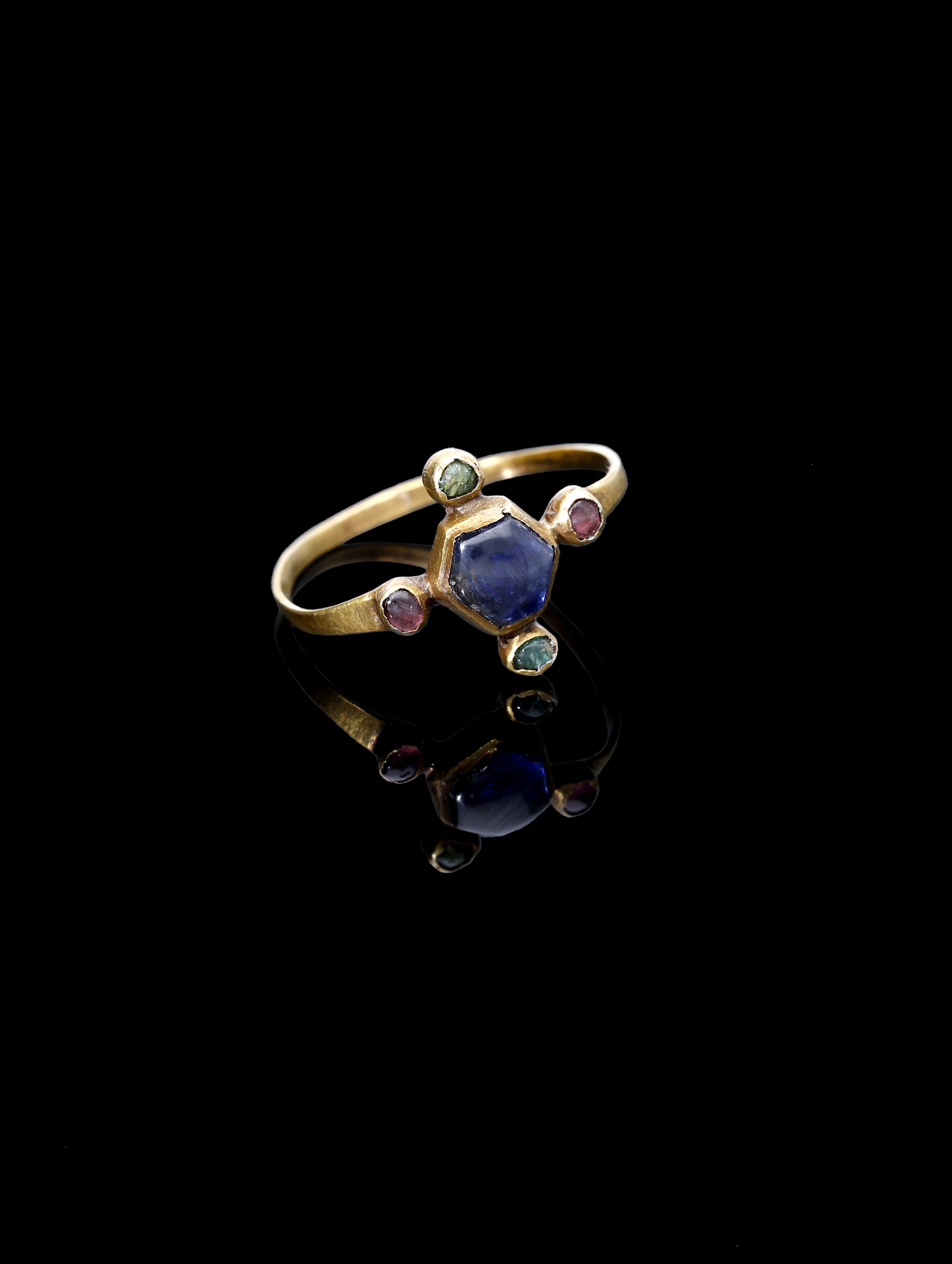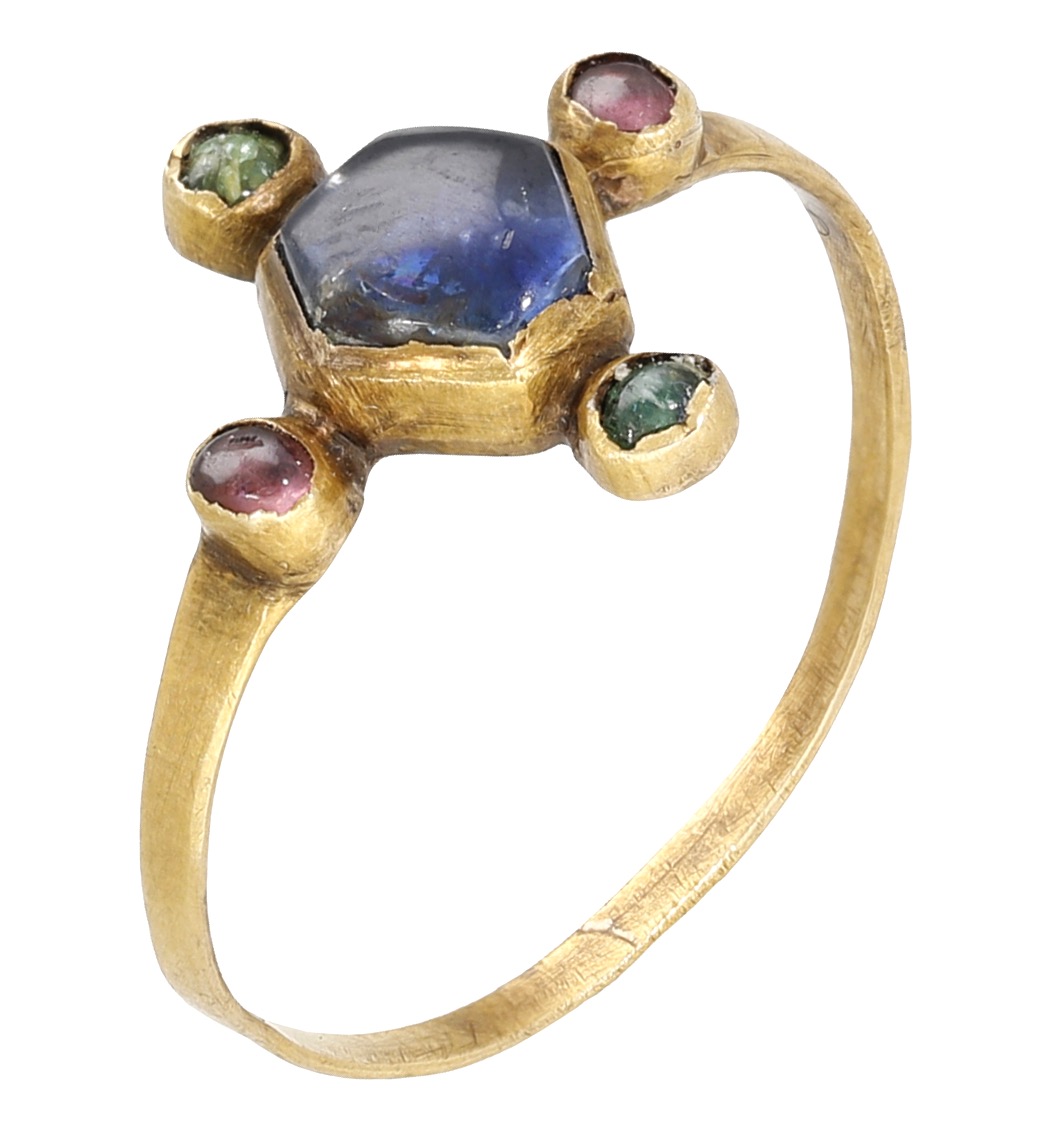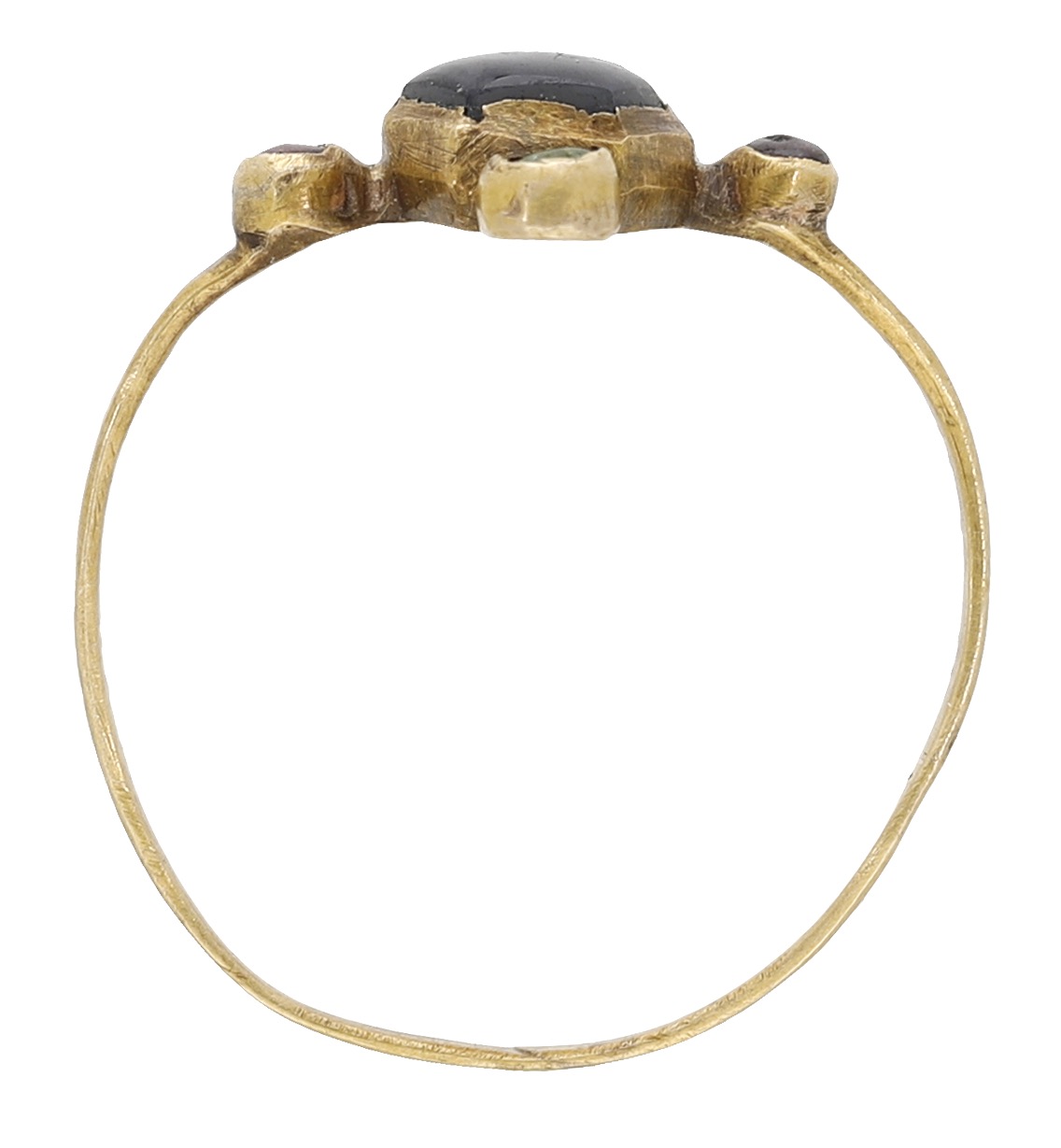THE KING ROW RING A rare gem-set Medieval Bishop’s ring, late 12th / early 13th century, the central hexagonal cabochon sapphire in closed back collet setting, between four similarly set small satellite cabochon gems - two emeralds and two garnets, to a narrow flat band, ring size M, weight 1.2gm. £15,000-£18,000 --- Provenance: This ring was discovered by a metal detectorist at Corner Farm, King Row, Shipdham, Norfolk, in October 2019. It is recorded on the Portable Antiquities Scheme database, ref: NMS-D5C69C and has been disclaimed as Treasure, ref: 2020-T190. This form of medieval ring, with a principal cabochon stone, usually a sapphire, surrounded by smaller collet set satellite stones (garnets or rubies, and emeralds), can be securely dated to the late 12th or early 13th century, and is associated with the bishopric. For similar examples see 1. Walter de Gray ring: This multiple gem ring, set with a cabochon sapphire, surrounded by satellite rubies and emeralds, was found within the coffin of Walter de Gray, the wealthy and powerful Archbishop of York, (Archbishop from 1215 - until his death in 1255). In 1967/8 his tomb in York Minster was restored and his coffin opened, revealing his ring and other items, now on display in the undercroft of York Cathedral. See: www.yorkminster.org 2. The Bishop of Chichester’s ring: Two bishops’ stone coffins at Chichester Cathedral were opened on 3 June and 16 July 1829, one enclosing an octagonal sapphire set ring, with four small emerald satellite stones, the design similar to the offered lot above. See: An engraving by Thomas King, circa 1830, (Ref: 46837i) depicts two Bishops’ opened coffins, both enclosing chalice and pastoral staff. According to the engraving, the tomb illustrated on the right is dated by the author as AD 1146. See: www.wellcomecollection.org 3. Whithorn Cathedral ring: A gold ring set with an oblong table-cut amethyst surrounded by eight smaller sapphires in individual settings, was found in the grave of a bishop in Whithorn Cathedral. Literature: Oman, C: British Rings, 800-1914, pub. B.T.Batsford Ltd, pages 20, 47, 94 and 96. Plate 16, D; plate 18, G (illustrates a similar ring, formerly in the Collection of Dame Joan Evans, now in the V & A Museum) and plate 19, A and E. Waterton, E.: Episcopal Rings, The Archaeological Journal, 1863, Vol 20, pages 235-6, fig. 8. --------------------------- The village of Shipdham, central Norfolk, was well established by the time of the Norman Conquest, extensively detailed in the Domesday Book of 1086, and at that time recorded as being within the largest 20% of settlements in England. During the reign of Henry III (1207-1272) the Bishop of Ely built a manor house at Shipdham, the moat in evidence on 19th century maps. Also of importance during the medieval period, this area contained a Royal deer park, owned by the See of Ely. The park, composed of Little Haw and West Haw, was in existence by 1277 but passed into the hands of the Wodehouse family between 1561 and 1584. All Saints church, Shipdham, dates from the 12th century. It is extremely rare to find a ring of this type in such fine condition, with all its original gemstones in situ. Condition Report The sapphire is an attractive bright blue colour; it has one chip to a corner and an internal fracture which is reflective and visible. Sapphire measures approximately 5 x 5mm. The garnets show a light wear and are pink in colour. The emeralds are fairly bright - one has fractures but is still whole, the other shows a surface chip and some fractures. Some wear to the collet settings and one garnet and both emeralds are just slightly sunk in their settings, all stones appear secure. The mount shows general surface wear commensurate with age.












